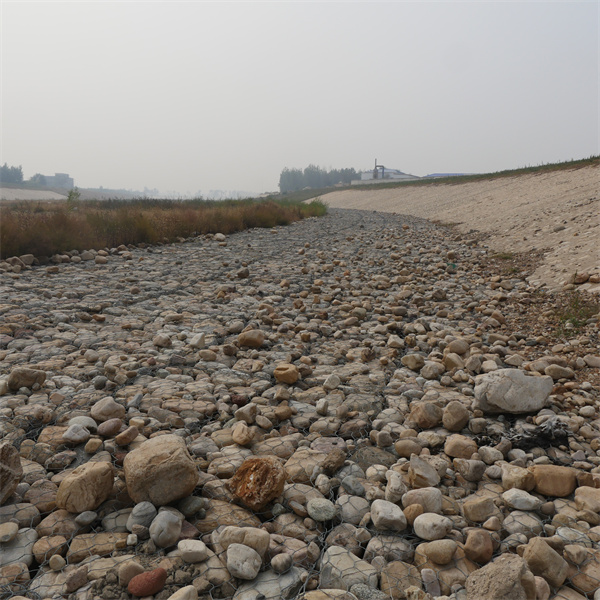Nov . 04, 2024 16:57 Back to list
Top Gabion Facade Ideas for Stunning and Durable Architectural Design
The Beauty and Functionality of Gabion Facades
In modern architecture, the integration of natural elements into structural designs has gained immense popularity. One innovative way to achieve this is through the use of gabion facades. Gabions, which are wire mesh containers filled with stones, have traditionally been used in civil engineering for erosion control and retaining walls. However, their application in facades has emerged as a distinctive architectural trend, combining aesthetic appeal with sustainability and functionality.
The Aesthetic Appeal of Gabion Facades
Gabion facades offer a unique visual texture and organic look that can enhance the beauty of any building. Each gabion can be filled with different types of stones, ranging from smooth river rocks to rough, jagged stones. This variability allows architects to customize the appearance of a building according to its surrounding environment and design vision. The natural stone colors and shapes provide a rustic charm that can soften the harsh lines of modern architecture.
Moreover, as time passes, the exposure of gabion walls to the elements can change their appearance, making them increasingly attractive. Moss and lichen may grow on the stones, bringing even greater harmony between the structure and its natural surroundings. This dynamic nature of gabion facades offers a sense of life and evolution that many architects seek to incorporate into their designs.
Sustainability and Environmental Benefits
One of the most significant advantages of gabion facades is their environmental benefits. By utilizing locally sourced stone, architects can reduce the carbon footprint associated with transporting materials. Furthermore, gabions can be constructed using recycled materials, aligning with the principles of sustainable design. This promotes a circular economy and minimizes waste, making gabion facades an eco-friendly choice.
In addition to their sustainable materials, gabion facades provide excellent drainage and air circulation. The gaps between the stones allow rainwater to pass through freely, reducing runoff and minimizing the risk of water damage. This feature is particularly beneficial in areas prone to heavy rainfall, as it helps to prevent erosion and maintain the structural integrity of the surrounding landscape.
best gabion facade

Thermal Performance and Energy Efficiency
Gabion facades also contribute to a building's thermal performance. The mass of the stone absorbs heat during the day and releases it slowly at night, helping to moderate indoor temperatures. This natural thermal regulation can lead to significant energy savings, as less reliance on heating and cooling systems reduces energy consumption. In energy-conscious designs, the implementation of gabion facades can work synergistically with other sustainable building practices to achieve high energy efficiency ratings.
Additionally, the exterior stone layer can act as a thermal barrier, protecting the building from temperature extremes. This not only enhances occupant comfort but also extends the longevity of the building materials, as they are less subjected to thermal stress and weathering.
Versatility in Design
Gabion facades are highly versatile and can be adapted to a variety of architectural styles. Whether for residential homes, commercial buildings, or public spaces, gabions can fit seamlessly into any design concept. They can be used as standalone features or combined with other materials like glass and wood to create a striking contrast that highlights the strengths of each material.
The modular nature of gabion construction also allows for easy alterations and additions, making them an ideal choice for projects that may require future expansions or changes. Establishing gabion facades in urban areas can also help integrate green spaces into the built environment by enabling vertical gardens or plantings to thrive in the unique structure.
Conclusion
The use of gabion facades reflects a harmonious blend of nature and modern architecture. Their aesthetic uniqueness, sustainable materials, thermal performance, and design versatility make them an asset in contemporary building practices. As the demand for sustainable and visually appealing architecture continues to grow, gabion facades are set to play a vital role in shaping the face of future urban environments. Embracing this innovative approach not only enhances the beauty of our surroundings but also promotes an environmentally responsible and sustainable future in construction.
-
The Role of Galvanized Gabion Mesh in Riverbank Protection
NewsJun.26,2025
-
The Role of Gabion Basket Raised Bed in Sustainable Gardening
NewsJun.26,2025
-
Quality Assurance of Wire Mesh Gabion Baskets
NewsJun.26,2025
-
Installation Guide for Welded Gabion Box
NewsJun.26,2025
-
How to Choose the Right Gabion Box
NewsJun.26,2025
-
Different Types of Gabion Wire Mesh
NewsJun.26,2025
-
Why PVC Coated Gabion Mattress Is the Best Solution for Long-Term Erosion Control
NewsMay.23,2025






